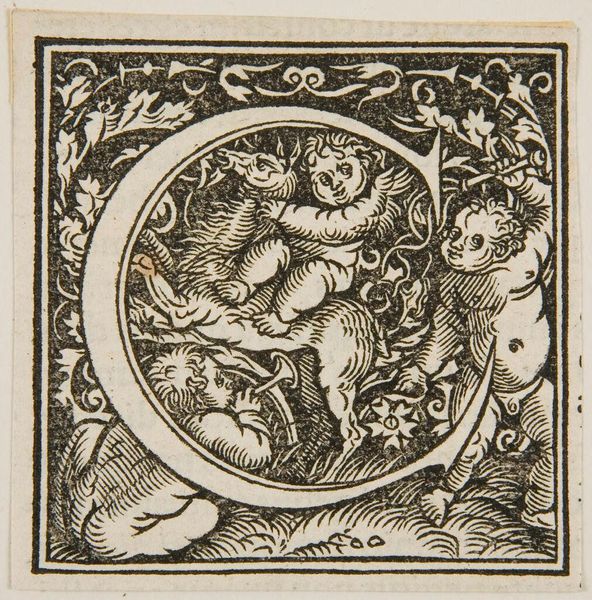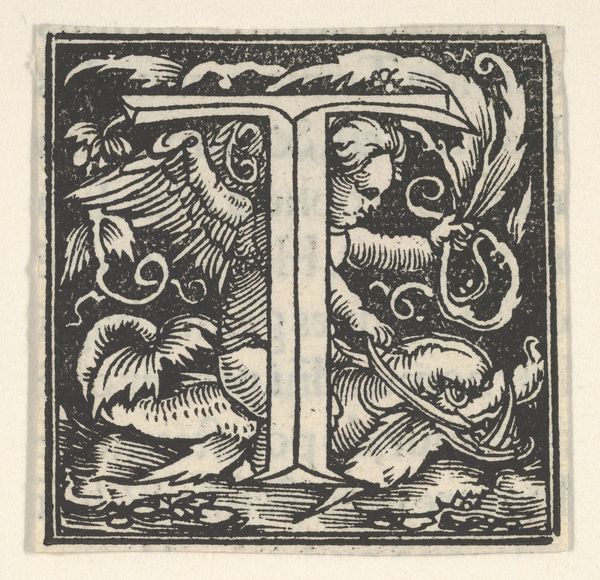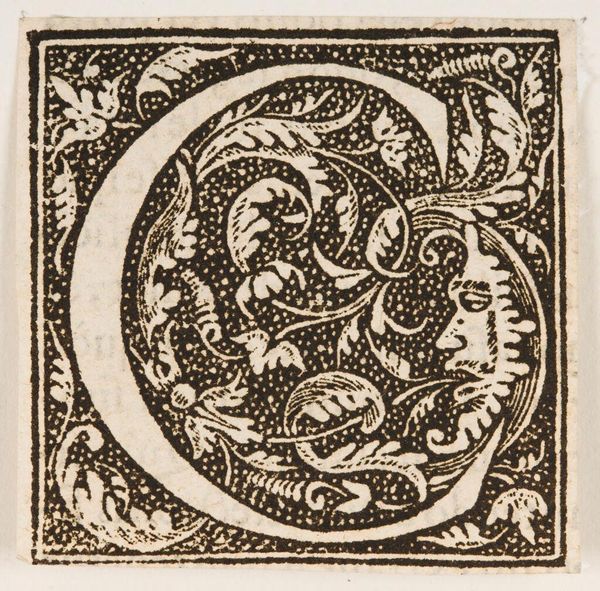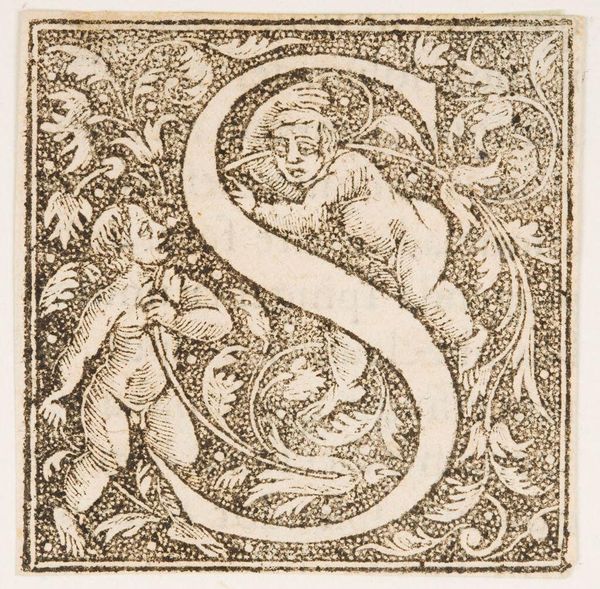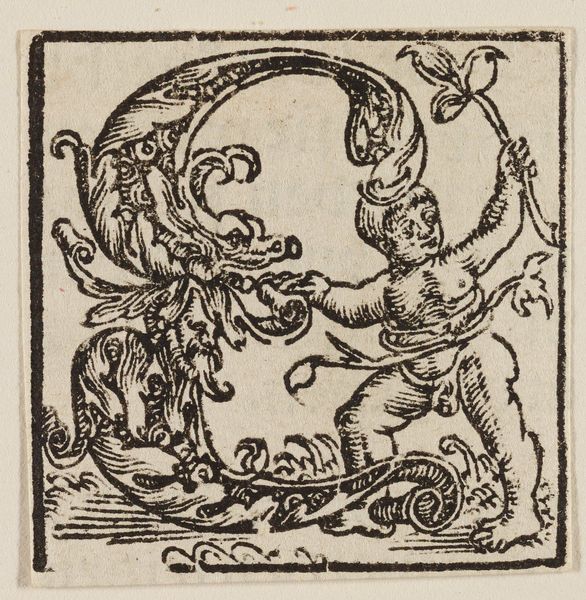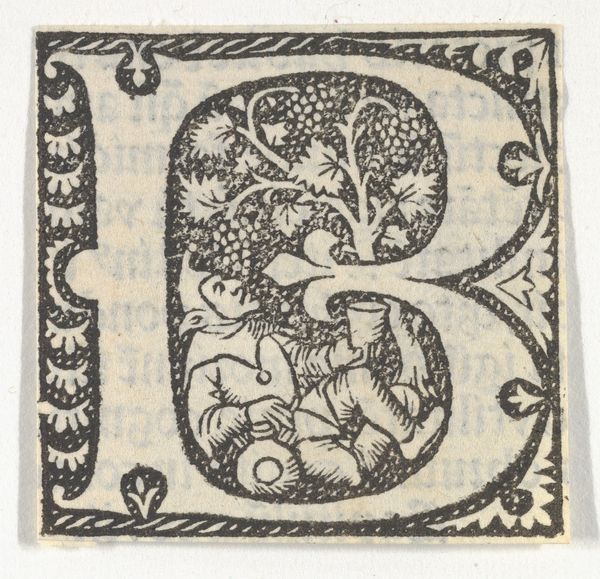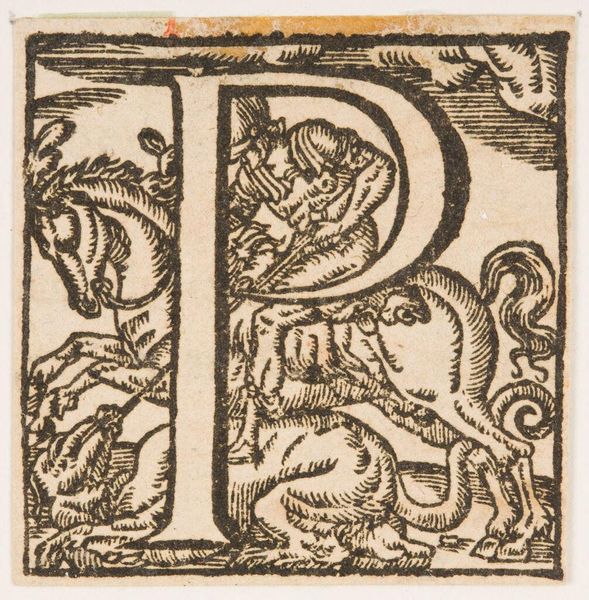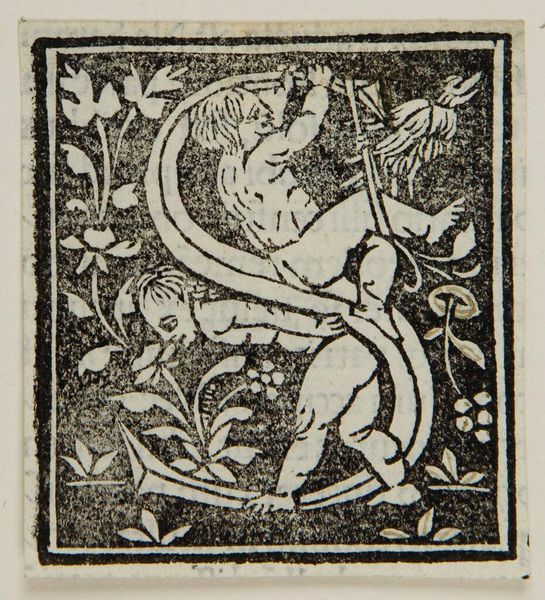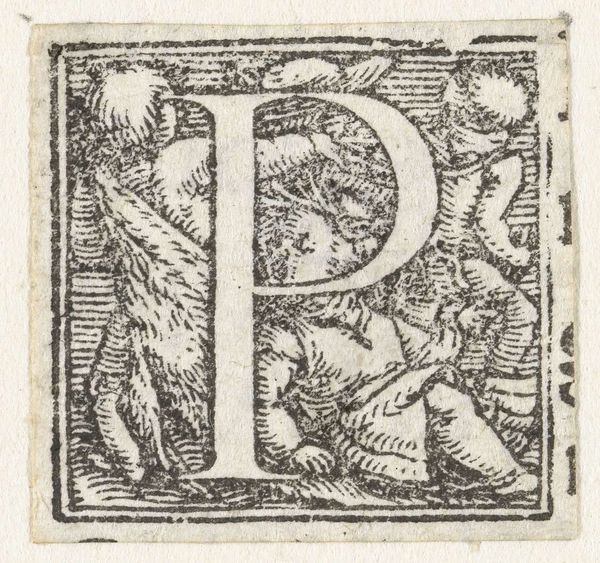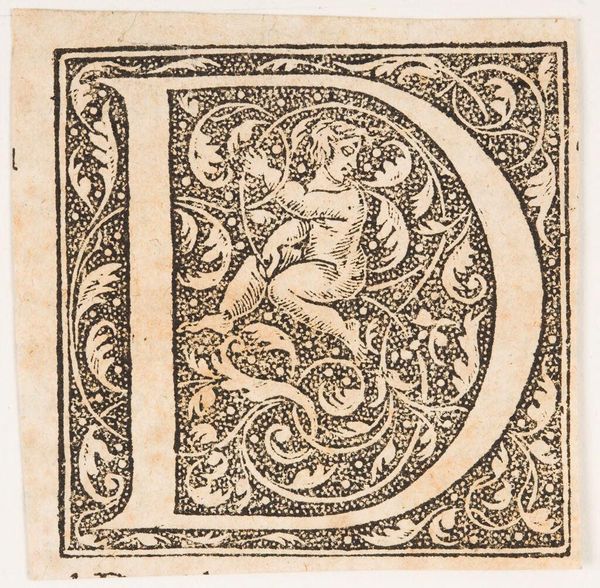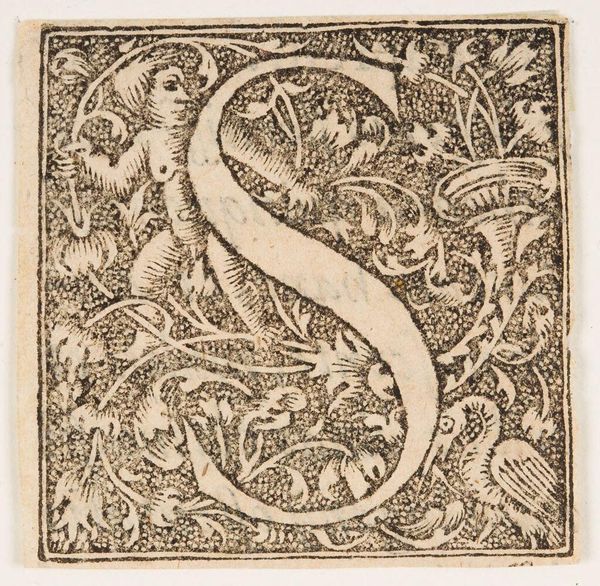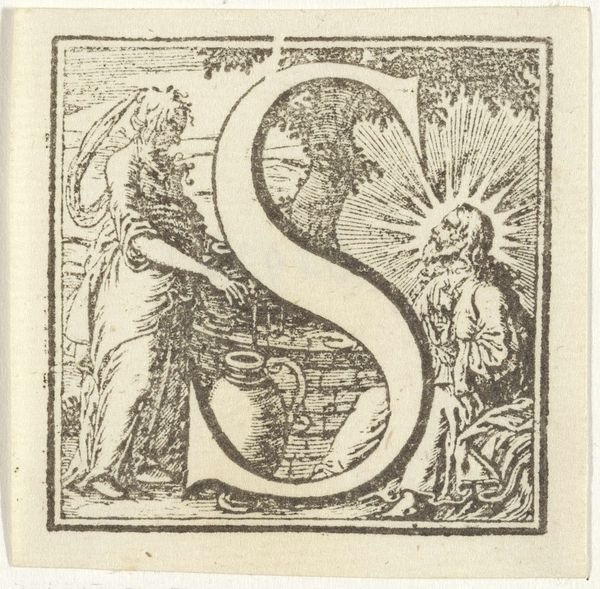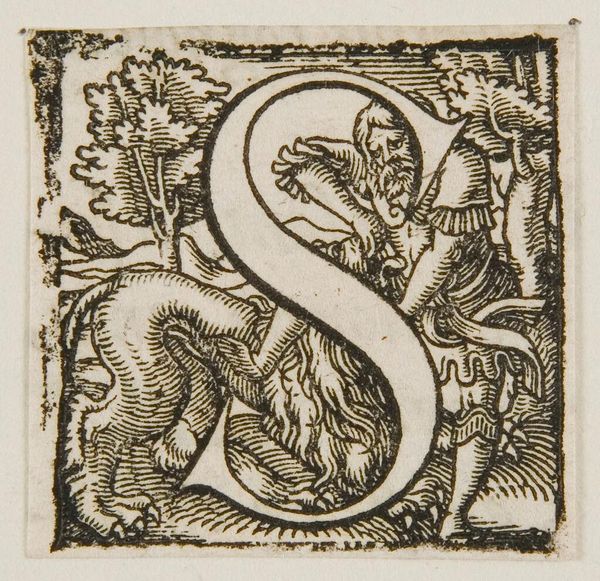
drawing, print, woodcut, engraving
#
drawing
#
allegory
#
pen drawing
# print
#
figuration
#
11_renaissance
#
woodcut
#
northern-renaissance
#
engraving
Dimensions: Sheet: 1 7/8 × 1 15/16 in. (4.8 × 4.9 cm)
Copyright: Public Domain
Around 1538, in Germany, Heinrich Vogtherr the Elder created this woodcut initial letter S with putto. This image comes from a time when the printing press was still a relatively new invention. The ability to mass-produce texts revolutionized European society, but it also created a demand for decorative elements like this initial. Note how Vogtherr combines religious and secular motifs. The putto, or cherubic child, was a common figure in Renaissance art, often associated with love and beauty. Here, though, it's juxtaposed with a fierce dragon-like creature, perhaps representing the struggle between good and evil that preoccupied many at the time of the Reformation. To fully understand this print, we need to delve into the history of printing, the religious conflicts of 16th-century Germany, and the visual language of Renaissance art. Art history is not just about aesthetics, it’s about understanding the social and cultural forces that shape artistic production. Primary sources and historical context are essential tools for understanding the meaning and significance of this image.
Comments
No comments
Be the first to comment and join the conversation on the ultimate creative platform.
